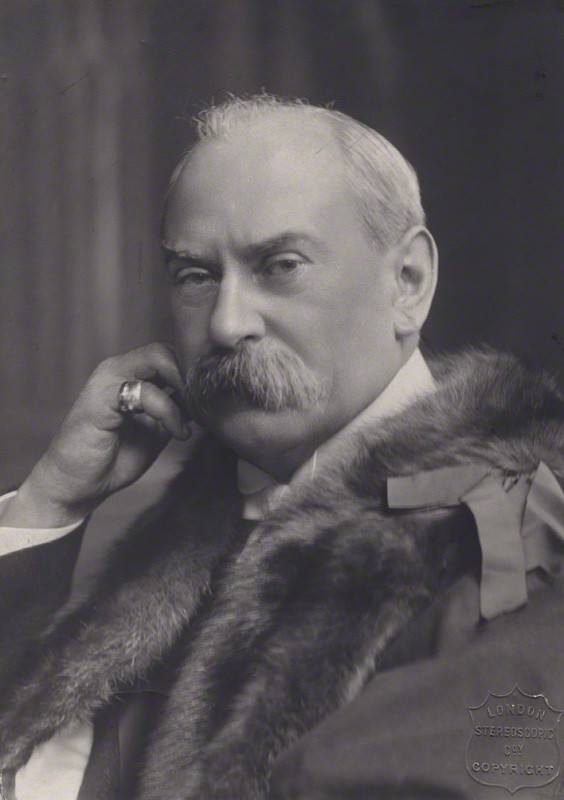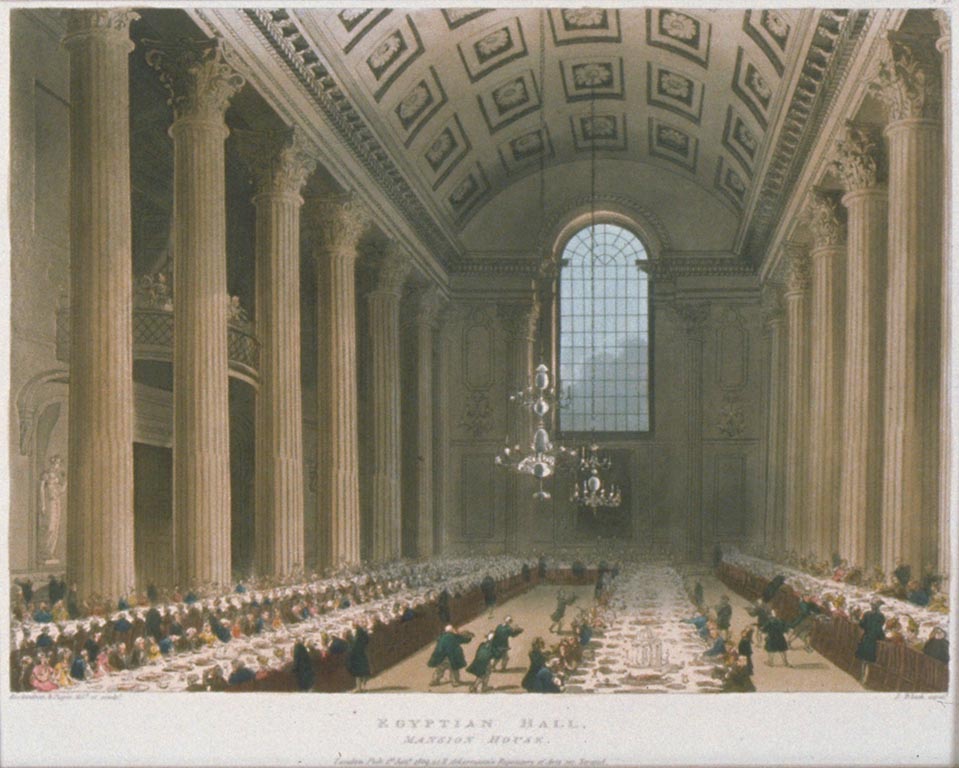
Almost inevitably the Roper Parkingtons were there…….
The Lord Mayor and Lady Mayoress held a reception of Catholics at the Mansion House on Monday afternoon. Gracious, simple, and Catholic, it was a gathering of the family. The Archbishop was there and all the Bishops who had arrived for the Low Week Meeting : the Bishop of Newport, the Bishop of Birmingham, the Bishop of Nottingham, the Bishop of Salford, the Bishop of Portsmouth, the Bishop of Southwark, the Bishop of Hexham and Newcastle, the Bishop of Menevia, the Bishop of Galloway, and the Bishop of Amycla, whose purple with that of the Monsignori added colour to the scene. Amongst the clergy were Mgr. Canon Scott of Cambridge, Mgr. Tynan of Salford, Mgr. Canon Moyes, Mgr. Canon Howlett, Mgr. Grosch, Mgr. Brown, Vicar-General of Southwark, the Right Rev. Vicar-General of Glasgow, Provost Mackintosh, priests too numerous to name from all parts of London, North and South, Canons of the Cathedral Chapters of Westminster and Southwark, parish priests, Cathedral chaplains, priests from the provinces, members of religious orders, Jesuits, Dominicans, Augustinians, Benedictines, Franciscans, Servites, Canons of the Lateran, Vincentians, Salesians, Oblates of St. Charles, and many more. Catholic society in all its grades was represented :—the Princess Marie Louise de Bourbon, the Duchess of Seville and the Duc de Seville, Lady Mary Howard, Lady Edmund Talbot, Lady Vavasour, the Earl of Denbigh, Count Mensdorft, the Austrian Ambassador, the Count and Countess de Torre Diaz, Count O’Clery, Sir W. H. Dunn, M.P., and Miss Dunn, Sir J. and Lady Roper Parkington, Sir Francis and Lady Fleming, Lady and the Misses Dalrymple, Miss Weld Blundell, Colonel Sir Charles and Lady Euan-Smith, Sir Henry, Lady, and Miss Norbury, Sir Charles and Lady McDonogh Cuffe, Lieutenant General and Mrs. Mackesy, Mr. Justice Walton, Mr. J. G. Snead Cox, Major and Mrs. R. Meyer, Miss Anstice Baker, Mrs. Bernard Mole, Miss Streeter, Mlle. Janotha, Miss Minnie Stewart, Mrs. Leeming, Mrs. Plater, Colonel Vaughan, Mr. Roskell, Mr. Lescher, Surgeon-General Maunsell, Mr. and Mrs. John Kenyon, Chancellor and Mrs. Tristram, Dr. Counsell, Lieutenant-Colonel Wellesley, Miss Emily Hickey, and about 500 others, all representative of business, law, art, letters, and public life among the Catholics of London.
A programme of music of exceptional interest was provided in the Egyptian Hall under the direction of Mr. H. Plater. The central attractions were the singing of Madame Blanche Marchesi in Willeby’s “Crossing the Bar,” an “Ave Maria” by Mlle. Janotha, and ” Jerusalem ” from Gounod’s “Gallia.” Miss Newbery, Madame Henrietta Engelhard, and Miss Catherine Aulsebrooke, also sang with much acceptance ; Miss Nora Freeley in violin solos, Signor Manrico Bacci, Mr. Fraser Gange, and Mr. Denis O’Neil in songs also making their mark; as also did Mr. H. Plater as a whistler, and little Blanche Young, a mite of a child, in a finely executed “Good Luck Dance,” written by Mile. Janotha, and named after her mascot, ‘ Little White Heather,” which, by the way, Mlle. Janotha brought with her. The accompanist was Mr. Albert Lyne.

The reception was in every way a memorable one in the crowded year in which the Lord Mayor and Lady Mayoress are utilising every opportunity for doing good. An illustration was a beautiful but pathetic scene in the Egyptian Hall. While all was moving brightness in the rooms of state, at the end of the Egyptian Hall, to the accompaniment of the rare music, a number of cripple girls were giving an exhibition of exquisite work in artificial flowers, to which craft and art they had been trained by a beneficent institution, the Watercress and Flower Girls’ Mission in Cripplegate, founded in 1866, and beginning work among crippled girls in 1879. The work is educational, curative and industrial, and extends to all parts of the country, teaching crippled girls to earn their own living, and ministering weekly to 5,000 girls, women, and children. It was established by a Nonconformist minister, and is a non-Catholic institution, but charity knows no boundaries, and “God’s Poor,” of whatever creed or kind, find loving sympathy in the large Catholic heart of the City’s queen. The cripple girls and their exquisite work were made a special and fitting feature of the reception.
The above text was found on p.30, 9th April 1910 in “The Tablet: The International Catholic News Weekly.” Reproduced with kind permission of the Publisher” The Tablet can be found at http://www.thetablet.co.uk .
More detail on the flower girls mission can be found here